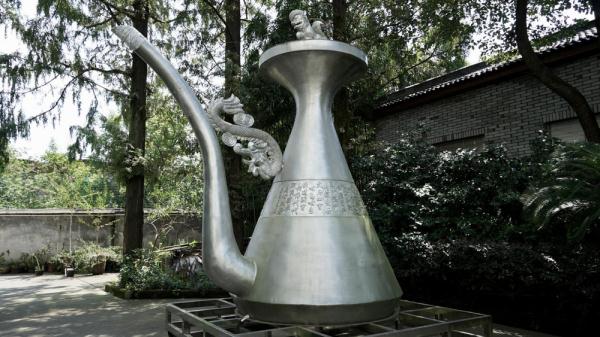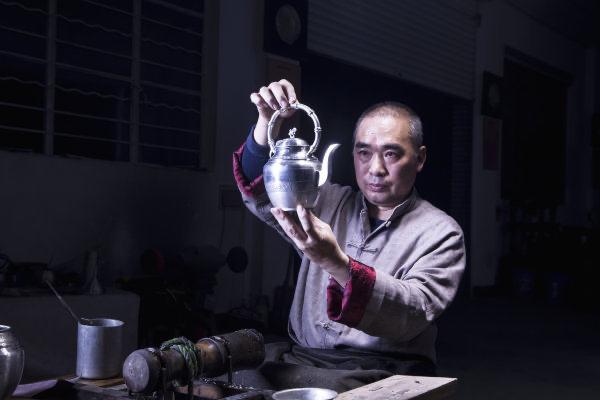
A statue of a Yongkang tin wine bottle. [Photo/gmw.cn]
Tin carving, also known as "tin art" or "tin ware", is a traditional tin art widely popular among Chinese people. The tin-making process in China was already quite mature in the Shang (c.16th century-11th century BC) and Zhou (c.11th century-256 BC) dynasties. Tin is non-toxic, rust resistant, moisture resistant, and acid and alkali resistant, has a soft texture and low melting point, and is easy to process. As aresult, tin art became intertwined with people’s daily lives.
Since the Song Dynasty, the use of tin utensils has been very common. A number of daily utensils such as tin tea cans and tin heaters are popular among the people. Traditional tin works are mainly used for daily necessities, and some are also used during worship rituals.

Sheng Yiyuan is an inheritor of Yongkang tin carving. [Photo/gmw.cn]
Yongkang tin carving is a provincial intangible cultural heritage item in East China's Zhejiang province.
Yongkang tin carving products mostly consist of daily necessities such as wine pots, soup cans, powder boxes, fruit plates, and complete sets of makeup for weddings, as well as sacrificial products such as imitation incense burners and candlesticks.
Traditional Yongkang tinware is manufactured by hand with high tin purity. Creating a tin carving work requires multiple processes such as melting the tin, pressing plates, forging, filing, welding, painting, and pressing gold foil. The products, excellent in both modeling and carving, are manufactured with strong regional features.